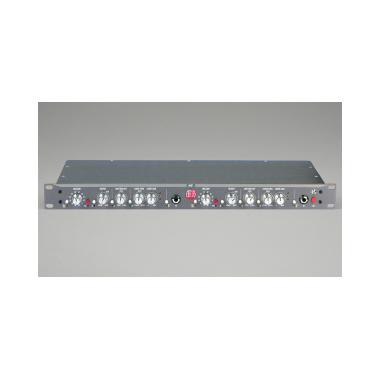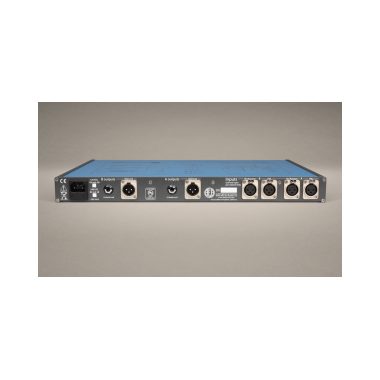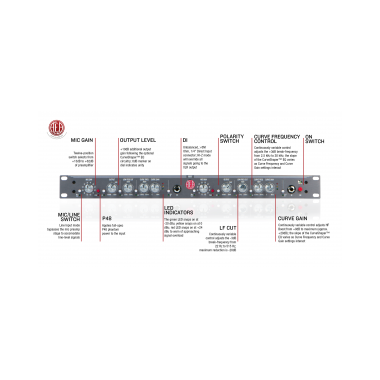- Flyline Music AG
Hauptmenü:
×
- index
-
Produkte
-
Mikrofone
-
3DIO
- Microphones
- Pro Microphones
- Accessoires
- AEA
- Antelope Audio
- Avantone Pro
- Bock Audio Design
-
Cascade Microphones
- Short Ribbons
- Long Ribbons
- Specialty Ribbons
- Condenser Mics
- Accessoires
- Cloud Microphones
- Chandler Limited
- Coles Electroacoustics
-
Earthworks
- Vocal Series
- PianoMic Series
- Drum Series
- SR Series
- TC Series
- QTC Series
- Periscope Series
- Measurement Series
- ChoirMic Series
- TableComm Series
- FlexMic Series
- FlexWand Series
- Installation Series
- ZDT Preamps
- Accessoires
- Ear Trumpet Labs
-
Ehrlund Microphones
- Microphones
- Preamplifiers
- Accessoires
- Griffon Microphones
- Josephson
- Kahayan Pro Audio
- Luke Audio
- Manley Labs
- Mojave Audio
- Placid Audio
- Roswell Pro Audio
- Royer Labs
- Soyuz Microphones
- Stager Microphones
- Townsend Labs
- Vanguard Audio Labs
- Warm Audio
-
3DIO
-
Studio Equipment
- A Designs Audio
- ACME Audio
- AEA
- AMS Neve
- Amtec
- Analoguetube
- AnaMod
-
Antelope Audio
- Discrete Interfaces & Modeling Mics
- HDX & USB Interfaces
- Thunderbolt & USB Interfaces
- USB Interfaces
- Master Clocks
- Stereo Converters
- Mic Preamps
- Monitor Controller
- API
- Ark8
- Asparion
- Audified
- Avalon Designs
-
BAE
- Guitar Tools
- 500 Series
- Deskop Mic Preamps
- Modules & 19"
-
Bettermaker
- 19" Outboard
- 500 Series Modules
- Big Bear Audio
- Black Box
-
Black Lion Audio
-
500 Series
- Modules
- Rack
-
Outboard
- Mic Preamps
- Compressor
- Studio Clocks
-
500 Series
-
BURL Audio
- B1 500 Series Modules
- B2 Bombers
- B26 Orca
- B32 Vancouver
- B16 Mothership
- B80 Mothership
-
Chandler Limited
- Abbey Road Series
- 500 Series
- Germanium Series
- LTD Series
- Rack Mixer
- Guitar Pedals
- Crane Song
-
Daking
- Preamplifiers
- Compressors
-
Dangerous Music
- Converters
- Controller
- Router
- Summierer
- Outboard
- Dave Hill Designs
- Dizengoff Audio
-
Drawmer
- Monitor Controller
- Sound Protection
- 60ies / 70ies Series
- MXPro Series
- Gates & Compressors
- Digital Management
- Signal Splitters
- Signal Distribution
- Power Amplifiers
- Earthworks
-
Elysia
- 500 Series Modules
- 19" Outboard
- Empirical Labs
-
Fredenstein
- MixCube
- HD Reference Preamps
-
500 Series
- Artistic Modules
- F600 Modules
- Racks
- Vintage Analog Series
- Outboard Equipment
- Grace Design
- Great River Electronics
-
Heritage Audio
- RAM Series
- Elite Series
- 500 Series
- Table Top Series
- 19" Outboard
- Classic Series
- Highland Dynamics
-
IGS Audio
- 500 Series
-
19" Outboard
- Spring Reverb
- Compressors
- Equalizers
- Preamplifier
-
Inward Connections
- 500 Series Modules
- 19" Outboard
- JDK Audio
-
Kahayan Pro Audio
- Summing Mixers
- Amp/Speaker Selectors
- Preamplifier
-
Kush Audio
- 500 Series Modules
- 19" Outboard
-
La Chapell Audio
- 500 Series Modules
- 19" Outboard
-
Lisson Grove
- 19" Outboard
- Little Labs
- Locomotive Audio
-
Looptrotter
- 500 Series Modules
- Outboard Equipment
-
Modular Console
- Mäag Audio
-
Manley
- Mic Pres / Combos
- Equalizers
- Dynamics
- Studio Products
- Maselec
-
Mercury Recording Equipment
-
500 Series
- Modules
- Racks
- Power Supplies
- Accessoires
- Vacuum Tube Outboard
- Solid State Outboard
- Custom Shop Outboard
-
500 Series
- Millennia
-
Mytek Digital
- Amplifiers
- Converters
- Private Q2
- Clock / SRC
-
Overstayer
- 19" Outboard
- Pete's Place Audio
-
Phoenix Audio
- Desktop
- 500 Series
- 19" Outboard
- 1/2 19" Outboard
-
Purple Audio
- MFTwenty5 Rack Mixer
- 500 Series
- 19" Outboard
- Q2 Audio
-
Retro Instruments
- 500 Series Modules
- Portable Amplifier
- Outboard Equipment
-
Roger Schult
- 500 Series Modules
- 19" Outboard
-
Power Supplies
- Roll Music Systems
- Rupert Neve Designs
-
Serpent Audio
- 500 Series Modules
- 19" Outboard
-
Shadow Hills Industries
- 500 Series
- 19" Outbaord
-
Solid State Logic
- Small Format Consoles
- 500 Series
- Analogue Processors
- X-Rack System
- Digital Equipment
-
Spectra Sonics
- Desktop
- 500 Series
- 19" Outboard
- Standard Audio
-
Teegarden Audio
- Tube DI
- 19" Outboard
-
Teknosign
- Box Line
- Preamplifier
- Summing Mixers
- Power Conditioner
- Patchbays/Adapters
- Thermionic Culture
-
TK Audio
- 500 Series Modules
- 19" Outboard
- Tonelux
- Tube Tech
- UK Sound by BAE
-
Universal Audio
- UAD-2 Live Rack
- OX The Amp Top Box
- Audio Interfaces
- UAD Accelerators
- Analog Hardware
- Vertigo Sound
- Warm Audio
- Weight Tank
- WesAudio
-
Monitoring
- Auratone
-
Avantone Pro
- CLA Series
- MixCubes
- MixPhones
-
Aviom
- Chris Pelonis
- FUGU Speakers
-
Electronic Sound
- Mode Machines
- Sequential
-
Studio Electronics
- Boomstar Modular Synthesizers
- Boomstar Modular Eurorack
- Boomstar Desktop Synthesizers
- 19" Analog Synthesizers
-
Vermona
-
Eurorack
- Module
- Gehäuse und Zubehör
- Synthesizer
- Drums & Percussion
- Effektgeräte
-
Eurorack
-
WMD
- Effect Pedals
-
Eurorack Modules
- Fracture
- Chimera
- Overseer
- MSCL
- Arpitecht
- Arpitecht Triad
- TRSHMSTR
- Aperture
- Performance Mixer
- PM Channels
- PM Mutes Expander
- Geiger Counter
- Micro Hadron Collider
- Compressor
- PDO MKII
- Triple Bipolar VCA
- SSM
- SSM Expand
- Synchrodyne
- Synchrodyne Expand
- Digital VCA
- DVCA
- MM VCA
- MM Envelope
- MME Extension
- Pro Output
- QAAF
- Buffered Multiple
- Invert Offset
- WMD / SSF Collaboration
-
Accessoires
-
ATR
- MDS-36 Tapes
- Precision Analog Master Tapes
-
Bittree
- TT Patchbays
- XLR / Jack Patchbays
- Cloud Microphones
-
Latch Lake
- micKing®
- Xtra Booms
- iOxbooms
- Parts
-
Pete's Place Audio
- Pan 60
- Recording The Masters
- Scott Liebers
-
Sterling Modular
-
Multistation
-
Plan Consoles
- Racking Systems
-
Multistation
-
Teknosign
- Power Conditioner
- Patchbays/Adapters
- Vovox
-
Zaor Studio Furniture
-
ATR
-
Mikrofone
- News
- Preislisten
- Links
- Kontakt
Produkte > Studio Equipment > AEA > Ribbon Preamps
Features
Technische Daten
Modelle / Preise
Zubehör
Vovox 4.0602: initio Netzkabel, 1.8m
Hersteller
RPQ2
High Gain Stereo Microphone Preamplifier
mit Curve Shaper EQ
- Stereo Mikrofon Vorverstärker mit 81dB Gain
- Cleaner und weicher JFET Sound
- High Frequency Curve Shaper EQ
- Low Frequency Proximity Control
- No Load™ 63kOhm High-Impdanz Design
- High Resolution & High Impedanz DI Inputs
- Mic/Line Mode mit Post-Mic und Pre-EQ Inserts
The Versatile Mic Pre2
The AEA RPQ2 Ribbon Preamp provides two channels of high-quality, high-gain, low-noise preamplification with a rich and musical sound that complements the natural tonality of your microphone. Specifically designed for ribbon microphones, the RPQ2 excels at drawing out the warmth and lush sound that ribbons are uniquely known for. With 81dB of gain, JFET circuitry, and an input impedance of 63K Ohms, the RPQ2 delivers the precision, quietness, and headroom needed for today's high-resolution recordings.
The RPQ2 is AEA’s second iteration of the high-performance RPQ preamp with the addition of some new and useful features. It is now possible to plug your instrument directly into the RPQ2’s high impedance circuit with its front-panel direct inputs. The RPQ2 also includes a Mic/Line switch for balanced line inputs and outputs, as well as inserts for patching compressors or other effects between the preamp and CurveShaper™ EQ section. The RPQ2's CurveShaper™ EQ gives you the tools to control your ribbons right at the start of the signal path. Switchable and tunable low frequency (LF) and high frequency (HF) controls allow you to tame proximity problems and provide high-frequency extension and slope control.
Engineers have discovered that the RPQ2 is a perfect fit with condensers and moving coil microphones. By virtue of its sonic qualities and versatility, the AEA RPQ2 is the tool of choice for all microphones whenever a true and pristine signal path is desired. Detailed and accurate, the AEA RPQ2 is a high-quality, high-gain choice for all microphones.
Two Peas in a Pod: Musical Preamp, Sweet EQ
The CurveShaper’s™ high-frequency filter boost enables you to add a little extra “presence” or “air” to your source. The circuit functions in a similar manner to a conventional parametric shelving boost, but with a significant difference: the slope varies as both the CurveShaper™ and HF Gain controls are adjusted. This unique bell curve was designed with the intention to compensating for the high-frequency roll-off that is inherent to most ribbon microphones. But beyond ribbon mics, the smooth HF filter is remarkably well suited for brightening up condenser microphones used at a distance, restore presence in overly “dry” acoustical environments, or even as a clean and transparent air-band boost on the 2-bus.
The CurveShaper’s™ low-frequency control easily removes boxiness and boominess in a fast and unobtrusive way. Ribbon microphones are capable of delivering strong subwoofer lows, and can have a significant bass proximity effect. Such strong low-frequency content can mask high-frequency intelligibility, so the tunable LF filter was engineered to tame low-frequency energy to appropriate levels. Its -20dB shelving curve is ideally suited to reduce excessive proximity effect, opening up new possibilities to use ribbons in close-up applications.For best voltage transfer, the impedance of the preamp should be at least five times the microphone’s output impedance. Many microphones have a nominal impedance of about 200 Ω, leading to the assumption that a preamp impedance of 1.0 to 1.5K Ω should be fine. However, passive microphones, and ribbons in particular have an output impedance that rises towards low frequencies and can easily get as high as 1000 Ω at resonance, resulting in a 6 dB loss at this frequency with a low impedance preamp. A preamp impedance of significantly more than the commonly seen 1.0 to 1.5K Ω is beneficial for all passive ribbons and moving-coil microphones.
All AEA preamps have input impedances of at least 10K Ω for these reasons. Microphone loading because of low impedance preamps can lead to interesting creative results, but AEA’s NoLoadTM inputs will guarantee highest sensitivity and bandwidth in all situations.
RPQ2
High Gain Stereo Microphone Preamplifier
mit Curve Shaper EQ
Gain at 1kHz: 81dB
Noise figure, rms A-weighted: <2dB
Noise figure, rms unweighted: <3dB, 20 kHz LPF bandwidth
EIN: <-130 dBu A-weighted, 150 Ohm resistive source
Frequency response: -3dB <1Hz and >100 kHz
THD: <0.02% at 1 kHz
Input impedance: Hi-Z Input Impedance >5M Ohms
Balanced Microphone Input Impedance: 63K Ohms (10K Ohms with Phantom-Power engaged)
Balanced Line Input Impedance: 18K Ohms
Input Gain control: Twelve-position switch provides from +13dB to +62dB of gain
Switched LF Shelving filter: -3dB break-frequency tunable from 22 Hz to 515 Hz; maximum reduction -20dB
Switched CurveShape EQ: +3dB break-frequency tunable from 2.1 kHz to 26 kHz; HF gain adjustable from +0dB to +20dB
Color LEDs: Green, Yellow, Red
XLR output maximum level into 600Ω load: 28 dBu, balanced; 0 dBu = 0.7746 V rms
XLR connectors polarity: Pin-1 is ground, pin-2 is high, pin-3 is low
LED signal level indicators: The green LED snaps on at -20 dBu to indicate the presence of signal; the yellow LED snaps on at 0 Bu; the red LED snaps on at +24 dBu to warn of approaching signal overload.
Dimensions:
Size: Full-rack measured with knobs and switches: 19” w, 9” d, 1.75” h (48.5 cm x 23 cm x 4.45 cm)
Weight: 4lb 5oz (~2 kg)
RPQ2
High Gain Stereo Microphone Preamplifier
mit Curve Shaper EQ
Vovox 6.3302: sonorus direct S Mikrofonkabel 3.5m
Vovox 4.0602: initio Netzkabel, 1.8m
Vovox 4.3102: textura Netzkabel, 1.8m
Vovox 9.0002: textura 6-fach Netzleiste T12
AEA Audio Engineering Associates
Pasadena, California, USA
The AEA Story
The AEA R44C, a faithful recreation of the iconic RCA 44 microphone.
In 1976, we began servicing ribbon microphones, and by 1998 we were manufacturing 100% of the parts for the RCA 44. We decided to release our version of the 44 and thus was born AEA Ribbon Mics.
Owning an AEA product means that you are serious about what you do and that you want to use gear made with the same love and dedication as your music. An AEA microphone or preamps reflect the amount of work you have put into honing your art as a musician. It stands for the traditional craftsmanship that has gone into your Les Paul guitar. And it mirrors the meticulous attention to detail you put into your sessions. All AEA products reflect the pride and an eye for detail and are designed for serious musicians and engineers.
AEA is a family-owned and operated business in beautiful Pasadena, California. Wes and his colleague, Bob Gerbracht, founded the company in 1964. Since then, AEA's mission has always been to build professional tools that faithfully capture the essential aspects of excellent recordings: true musicianship and a passion for performance.
In 1976, when General Electric bought RCA and closed down its microphone division, AEA began servicing these legendary ribbon mics that Wes had learned so much about from friends like Wally Heider and Dick Knoppow. We reissued our favorite microphone, the iconic 44 ribbon mic, and have continued to make ribbon microphones in the RCA tradition to this day. We at AEA take sonic integrity seriously and have even created preamps that have specially designed to meet the particular challenges of ribbon mics and bring out their full potential.
Proudly independent, we manufacture all our products by hand right here in the USA.
Copyright 2017. All rights reserved.







